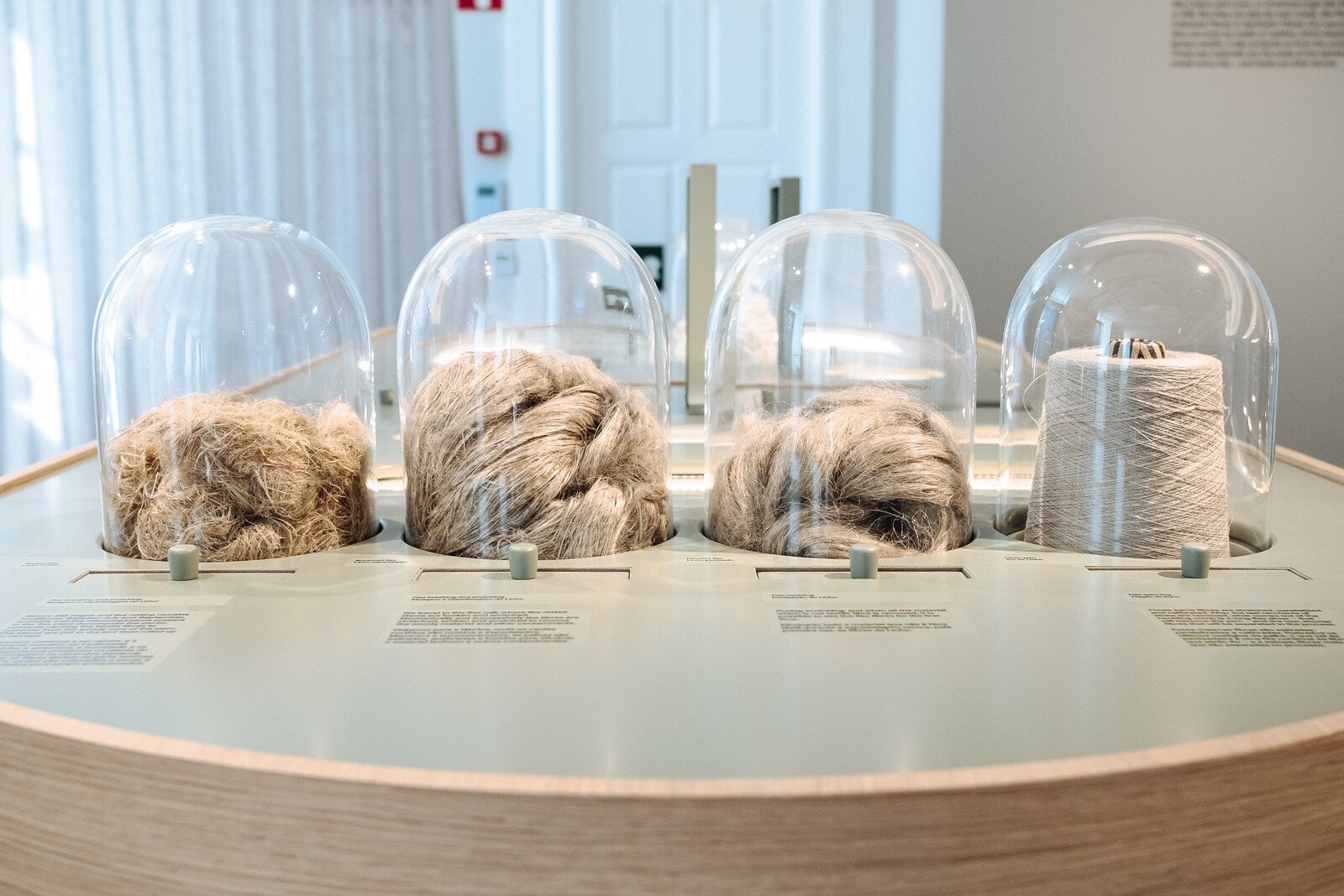Blog

Saber-fazer at the Museum of Fashion and Textiles
The Museum of Fashion and Textiles opened a few days ago in Vila Nova de Gaia, a new museum dedicated to fashion and the history of the Portuguese textile industry. At the beginning of the exhibition circuit, there is a part of the exhibition dedicated to raw materials, right down to yarn, and weaving, which had our contribution in the form of technical and scientific consultancy, the production of texts, content and the supply of all the exhibition materials.

On the retting of flax (pt2)
Although without the same dedication and care that I have for photography, I make a point of making short videos along the way.

Combing and the other side of Portuguese wool
Combing wool with Louet's mini combs has been one of my latest pleasures. And combing this gorgeous light gray portuguese merino that I brought from Ancorme a few weeks ago, makes it even more so. I don't know if you can see in the photos how the light brown shades show in the roving. It's beautiful.

Flax sowing 2016
After the trouble we had finding Galego Flax seed to start our crop in Serralves last year, it felt good to have it multiplied and have this year's sowing assured without having to count seeds.



The Flax Engineer
When I went to the BPGV to pick up the Galego Flax seeds, and explained Eng. Ana Maria Barata what we intended to do and explore through this idea of growing and processing our own fibre in Serralves, she told me about this colleague of hers that worked at the seed bank years ago: at some point, he had worked in a project related to flax and had developed some equipment that we might find interesting.

Shearing is coming!
We're almost in May and shearing season has been open for a while now, but in Serralves, the first time the Bordaleiras-Entre-Douro-e-Minho sheep will be sheared in the farm will be in the next saturday, the 9th of May, starting at 11h in the morning.

Washing wool with D. Ilídia
At the beginning of January, I went to see Mrs. Ilídia and together we washed a basin of wool, so that she could teach me how to do it properly. Washing wool is one of the seemingly simplest stages of the wool process, but for me it contains some wisdom.

Adelaide and the wool
On a visit to D. Ana, when she was there to explain to me how the loom's “risks” worked, I was lucky enough to also meet D. Adelaide, who is her older sister. She brought a few more blankets with her so that I could better understand how it all works.

Making a spindle with Zé Manel
When I started to learn how to spin wool, it became indispensable to get my own distaff and spindle. As I was lucky enough to learn from those who know what they are doing in regards to spinning, I was immediately informed about the characteristics of a good spindle: they’re made of oak, so that they may have the appropriate weight, they are handsculpted from beginning to end and they have a well-defined screw on the tip.

Fulling the wool
Leafing through Tecnologia Tradicional: Pisões Portugueses, I thought it was a funny coincidence that the only photos of a fuller in action were those of Mr. Francisco's father, the fuller at Pisão de Tabuadela, which I've already had the opportunity to visit.

Preparing the flax for spinning
D.Maria shows us how to prepare the linen to be spun with a distaff and spindle.

Learning to spin flax
With D.Maria orientating me, I spinned linen for the first time.
She combed the fibers for me, and after teaching me how to put it on the distaff correctly, it wasn’t too difficult to spin.

Plying yarn using only the thumb
Still related to the different ways a yarn can be plied, here’s a small video where Zé Machado explains how to ply without any tools, using only his thumb.

Spinning wool with D.Benta
On one of my trips to Salto, with the purpose of visiting the Pisão de Tabuadela (The Tabuadela Wool Stomping Facilities), where the last burel blankets made by the Women of Bucos were felted, I had the chance of meeting D. Benta.

How a Fulling Mill Works
A technical drawing and a precise description of the mechanics and operation of a fulling mill, from a chapter titled “os pisões de Barroso”, written by Joaquim Fernandes Figueira, in volume XIII of the publications of the Congress of the Portuguese World.

Making Thread from Boar Bristles
When I first visited him, José Machado showed me the basics of a technique I found interesting: making a hemp sewing thread from scratch with two boar bristles tips traditionaly used to sew shoes or other leather goods.

Lower quality silk
Adding to the high quality silk production process, there’s a lower quality silk process: This one doesn’t require the death of the butterfly.

The Silk Cycle
While it wasn’t the only place to produce silk in past times, right now, Freixo de Espada à Cinta has the only Crafts Centre in our country that still develops the cycle of silk in its entirety.

